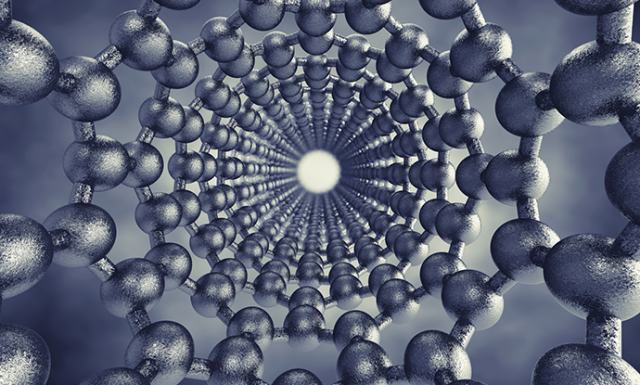Promising new approach for controlled fabrication of carbon nanostructures

An international team of researchers including Professor Federico Rosei and members of his group at INRS has developed a new strategy for fabricating atomically controlled carbon nanostructures used in molecular carbon-based electronics. An article just published in the prestigious journal Nature Communications presents their findings: the complete electronic structure of a conjugated organic polymer, and the influence of the substrate on its electronic properties.
The researchers combined two procedures previously developed in Professor Rosei's lab—molecular self-assembly and chain polymerization—to produce a network of long-range poly(para-phenylene) (PPP) nanowires on a copper (Cu) surface. Using advanced technologies such as scanning tunneling microscopy and photoelectron spectroscopy as well as theoretical models, they were able to describe the morphology and electronic structure of these nanostructures.
"We provide a complete description of the band structure and also highlight the strong interaction between the polymer and the substrate, which explains both the decreased bandgap and the metallic nature of the new chains. Even with this hybridization, the PPP bands display a quasi one-dimensional dispersion in conductive polymeric nanowires," said Professor Federico Rosei, one of the authors of the study.
Although further research is needed to fully describe the electronic properties of these nanostructures, the polymer's dispersion provides a spectroscopic record of the polymerization process of certain types of molecules on gold, silver, copper, and other surfaces. It's a promising approach for similar semiconductor studies—an essential step in the development of actual devices.
The results of the study could be used in designing organic nanostructures, with significant potential applications in nanoelectronics, including photovoltaic devices, field-effect transistors, light-emitting diodes, and sensors.
More information: Guillaume Vasseur et al. Quasi one-dimensional band dispersion and surface metallization in long-range ordered polymeric wires, Nature Communications (2016). DOI: 10.1038/ncomms10235
Journal information: Nature Communications
Provided by Institut national de la recherche scientifique - INRS



















